
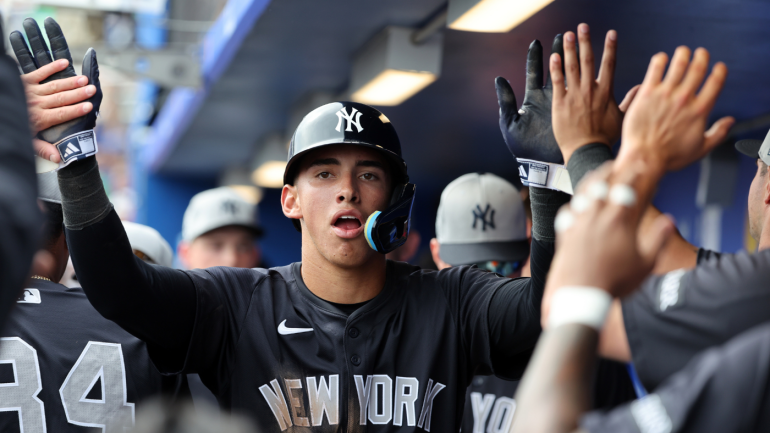
Welcome to Prospect Watch, CBS Sports’ regularly scheduled check-in on the minor leagues. For those new to the Watch, we publish this feature every other week, alternating between the American and National League farm systems.
This go around, we’re focusing on some strong early season performers for AL organizations. We did the same exercise for their NL counterparts back on May 2.
Let’s get to it.
The A’s took a gamble on Jump last summer, popping him with the 73rd overall pick after injuries limited him to 18 collegiate starts. He’s validated their faith to date, compiling a 1.95 ERA and a 8.5 strikeout-to-walk ratio in seven High-A appearances. Jump is a shorter lefty with a plunging arm action who gets far down the mound, creating a tough angle on the opposition when he elevates his low-to-mid-90s fastball. To wit, the data I have on him from spring suggests he imparts more than 17 inches of induced vertical break on his heater from a release height around 67 inches; for reference, that would put him in company with the likes of Freddy Peralta and Yoshinobu Yamamoto, among others. If he stays healthy, he’ll be an interesting arm to track.
I’m giving Hiraldo this spot over more notable prospects because he has the opportunity to become a fun story. Originally a Diamondbacks farmhand, he spent the last few years in assorted indy leagues. The Orioles signed him to a minor-league pact last fall, and have rushed him through their minor-league system. Hiraldo has a steep release point and, predictably, a vertical-based arsenal built around a mid-90s fastball. If Baltimore’s pitching staff continues to struggle, I could see them tapping Hiraldo for an audition later this summer.
Anthony, the best prospect entering the spring, has the highest OPS of any qualifying Red Sox minor-league hitter. Not only is his average exit velocity over 95 mph, but he’s drilled three balls over 112 mph. If he were in the majors, his maximum exit velocity this season would rank alongside, oh, Yordan Alvarez and Gunnar Henderson. Not bad, not bad at all. The Red Sox have resisted the urge to play Anthony at first base. Even if they maintain their resolve on that front, I think he’s going to force their hand to find a spot for him in the lineup.
Elko just received a promotion to the majors, but he’s getting the nod here anyway after batting .348/.431/.670 with 10 home runs in 31 Triple-A games. He’s a right-right first baseman nearing his 27th birthday, so you can probably figure out the score — for posterity’s sake: he’s prone to striking out because of his patient approach and his lackluster bat-to-ball skills. At the same time, he has legitimate thunder. Nearly all of his home runs were launched to center or the opposite field, and he’s cleared the 114 mph mark on two separate occasions already. It’s not as though the White Sox lineup has a particularly high standard to meet, so there’s no reason not to give him a look.
Doughty was a personal favorite heading into last summer’s draft despite being a prep right-hander. The Guardians popped him at No. 36, which I think offsets some of the risk that comes with this profile. Whatever the case, the polished Doughty doesn’t have the shiniest ERA to date. What he does have is the best strikeout-to-walk ratio among his affiliate’s starters. That may seem unimpressive, but mind you: he’ll play the entire season at 19, making him the youngest pitcher on the staff.
Those Pete Crow-Armstrong comparisons that have been applied to Clark since his amateur days hit a little different now, huh? Clark is holding up his end by hitting .300/.433/.425 with seven more walks than strikeouts over his first 31 High-A games despite being more than a couple of years younger than his average opponent. He still needs to improve against left-handed pitching, but you have to be pleased with how things are going for the former No. 3 pick.
Gordon, like Elko before him, just made his big-league debut. He’s a tall lefty with a face that looks like someone went into Photoshop and combined Justin Verlander with Matt Harvey’s. Anyway, he releases the ball from a lower arm slot, giving him an east-west (or is it west-east?) arsenal. Gordon threw five pitches with decent regularity in the minors, including a pair of low-90s fastballs. His best bat-misser is a slider that generated nearly 30% whiffs in Triple-A. He has a chance to establish himself as a back-end starter in the majors.
Caglianone was one of the most interesting players in last year’s draft, and that remains the case now that he’s batting .324/.400/.563 over 36 Double-A games. While performing so well at the separating level for real prospects should be encouraging, I’ll note that he continues to employ a swing-happy approach that has resulted in twice as many strikeouts as walks. If you had an issue with that aspect of his game last summer, I’m not sure there’s been much reason to change your mind. Conversely, if you adored Caglianone’s raw strength and feel for loud contact, then I think you’re more than justified in imagining him as something like the Royals’ answer to Yordan Alvarez.
The Angels don’t offer many compelling candidates. Nicholson, a 10th-round pick from last summer, gets the spot here because he’s hit .284/.436/.505 with nearly as many walks as strikeouts in 32 High-A games. Nicholson has legit pop, having homered to both fields; unfortunately, he’s shown some serious problems with left-handed pitchers. He’ll turn 25 come August, so the clock is already ticking.
As with Nicholson, McCusker is not the kind of player you would traditionally think of as a prospect. He’ll turn 27 in May and he has fewer than 100 Triple-A games to his credit. Unlike Nicholson and the Angels, I’m exercising my creative liberty here out of desire rather than obligation. While McCusker has some serious swing-and-miss issues that will limit him to a Quad-A perception, he’s also listed at 6-foot-8 and has the power to match. He’s hammered eight balls over 110 mph already, including a 115 mph home run just a few days ago. There are few things more fun in baseball, no matter the level, than a big man who hits the ball this hard.
Lombard, New York’s first-round pick in 2023, won’t celebrate his 20th birthday until June. That hasn’t prevented him from batting .299/.469/.421 with 10 extra-base hits, 14 stolen bases, and three more walks than strikeouts against High- and Double-A competition. Depending on how he fares the rest of the season, there’s a real chance he’ll be knocking on the big-league door before the end of his age-21 campaign.
I ranked Montes as the second-best prospect in the Mariners system because of his middle-of-the-order upside. He’s making good on that declaration, hammering High-A pitching to the tune of a .266/.387/.547 slash line with seven home runs across 34 games. Montes has pole-to-pole strength, albeit in addition to some serious swing-and-miss tendencies. He’s also whiffing on a full one-third of his offerings. That’s not ideal. If there is a positive here, it’s that Montes has the kind of slugging and on-base capacity to atone for a high strikeout rate. He’s also playing the duration of this season at age 20, which, if nothing else, affords him additional time to up his bat-to-ball skills.
For those who find Kinney’s name familiar, he was a supplemental round choice back in 2021. He missed the entirety of the 2022 season after injuring his shoulder during spring training. Last year, he made up for lost time by hectoring High-A pitchers. So far this season, Kinney is doing the same at the Double-A level, hitting .296/.333/.536. He’s a left-handed batter with plus raw strength (he’s homered several times to left field already) who is a skilled enough defender to remain on the dirt. Do note that while Kinney’s topline statistics don’t show a platoon split, he’s whiffed on more than 40% of his swings versus lefty pitchers to date, suggesting he’ll probably become more of a most-days player in the majors.
Davalillo is a short right-hander with a good splitter who ought to find himself en route to Double-A sooner rather than later. I write that because he’s struck out more than 37% of the batters he’s faced to date while walking just 4.9% of them. Oh, and he has a ground-ball percentage over 55%. It’s hard to do much better than that.
Nimmala has been a personal favorite dating back to his draft cycle in 2023. At the rate he’s going, a lot of other people are going to grow fond of his game, too. Nimmala has hit .277/.354/.515 with seven home runs and 10 other extra-base hits across 32 High-A games. Granted, he’s done that while striking out more than twice as often as he’s walked, and while whiffing more frequently than I would consider ideal. I’m willing to cut him some slack at this point given that he’s a 19-year-old shortstop playing against competition that is on average three years his senior.
This news was originally published on this post .






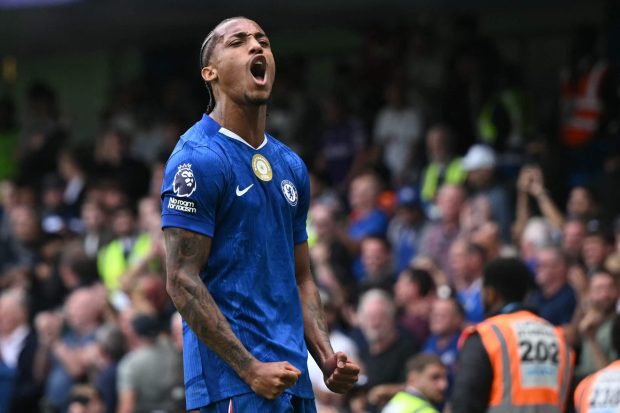
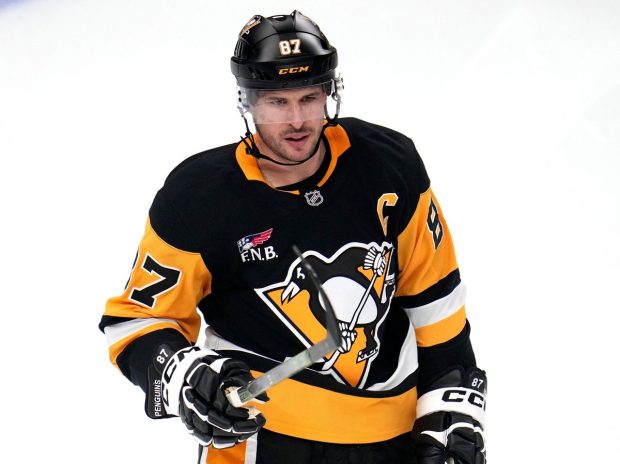
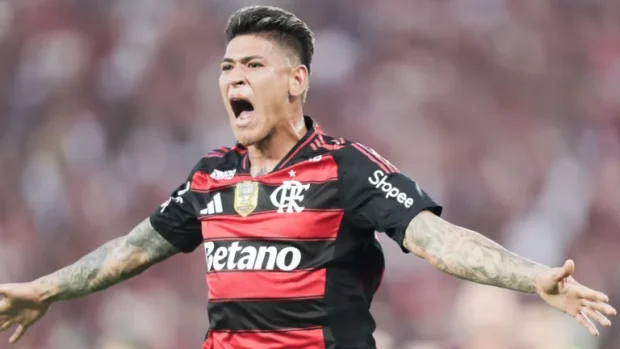
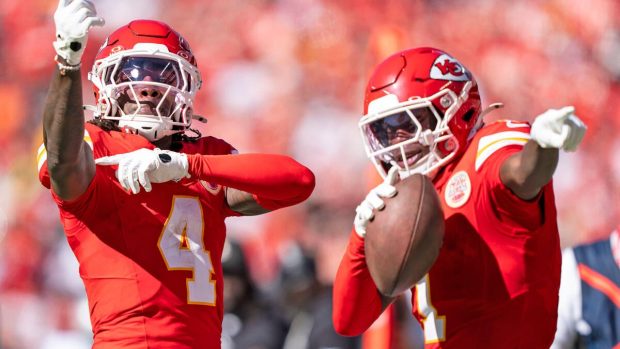
Be the first to leave a comment